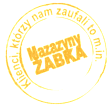Pre-medical first aid, why so important
First aid in the workplace and at home
All of us may find ourselves in a situation where we need immediate medical assistance or come into contact with someone who needs it. Doing first aid before the emergency services arrive is extremely important and can save lives.
According to the law in force in Poland, if we witness a situation in which a person is in a life-threatening condition or has suffered serious damage to his or her health, we are obliged to provide first aid. If we fail to do so, it is punishable by imprisonment of up to three years.
Pre-medical first aid is the set of all actions that should be taken to save the life of an injured person, before the arrival of qualified emergency services. The nature of the action varies depending on the situation of the casualty.
Stages of first aid:
- Safety assessment
The main principle applicable to first aid is "do no harm". This is why it is very important to properly assess the situation we are in. We should take care of the safety of the injured person as well as our own safety and the safety of all those who are at the scene. For example, in the event of a road accident, it is important to put up warning signs to prevent further dangerous incidents.
- Assessment of the victim's consciousness
After assessing the situation and possibly securing the scene, a very important activity is to examine the condition of the casualty. We check if the person is conscious, if they respond to our voice and light touch. We look to see if and what injuries the person has suffered.
- Call for assistance
If there is a need, we call for medical assistance. The emergency number to call is 112, during which you will be asked to provide basic information about the incident:
- what happened,
- where the accident site is located,
- how many people are affected,
- what is the condition of the injured persons,
- personal details of the person reporting the incident,
- whether there is any other danger.
The person on duty at the hotline can provide us with information on other actions to be taken until medical services arrive.
- Undertake first aid measures if the situation so requires
While waiting for the emergency services to arrive, we give first aid to the injured person. What action we perform depends on the person's condition. If we do not feel a pulse or breathing, we begin what is known as cardiopulmonary resuscitation (CPR). This involves a combination of different measures to restore vital signs.
When the victims are adults, CPR is started with chest compressions (30 times) to a depth of about 5 cm. The frequency is about 100-120 compressions per minute. This should be followed by two short breaths.
For children and infants, start CPR with 5 breaths. If this does not help, compress the sternum area with the wrist or fingers (for infants) - 15 compressions should be performed.
These actions are carried out until the injured person starts breathing or until the medical services arrive.
Legal issues and employer responsibilities
In any company, regardless of the number of people employed, it is fundamental for the employer and employees to comply with occupational health and safety (OSH) regulations. Through occupational health and safety training, an employee learns, among other things, about the dangers that may arise in his or her job and in the company as a whole. Every employer has a duty to protect the health and life of employees while performing their work.
When it comes to safety issues it is the employer's responsibility:
- inform workers of all existing risks, particularly those that could cause harm to health or loss of life,
- act preventively to eliminate the possibility of hazards.
As far as the provision of first aid in the workplace is concerned, the regulations in this area are described in the Labour Code, and their source is also the Regulation of the Minister of Labour and Social Policy of 26 September 1997. According to Article 209 par 1 pt. 2 the employer must:
- provide all necessary means for first aid,
- Designate an employee (or employees) to provide first aid; Whether this is one employee or many depends on the size of the workplace in question, the system of work organisation and the number of employees; it is up to the employer to choose the employee; the role of the employee designated to provide first aid will be different in an IT company and in a manufacturing plant,
- the employer is obliged to provide a means of communication to contact the ambulance service,
- there must be a first-aid kit (or a dedicated first-aid post) at the workplace.
First aid kit
The legislation does not regulate how many first aid kits should be in a workplace. However, every first aid kit must be equipped with a few essential items:
- artificial respiration mask,
- disposable gloves,
- sterile gases,
- slices,
- thermal blanket,
- triangular slings,
- Mesh to hold dressings,
- scissors.
First aid training
The ERGON Personnel Improvement Centre provides first aid training courses that can be tailored to your specific needs. First aid courses cover both the necessary theory and practice. Our qualified staff are available to the trainees throughout the course. We train throughout the whole of Poland. We have fully equipped training rooms and modern facilities. You are welcome!

































